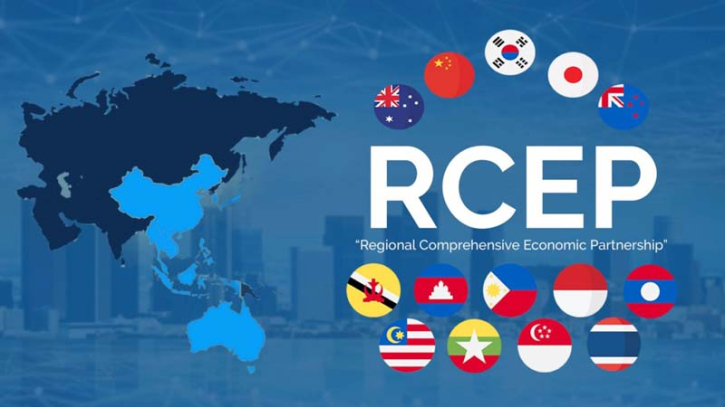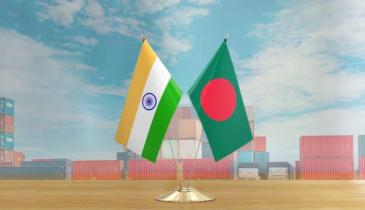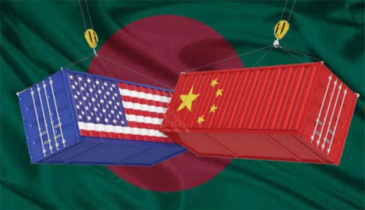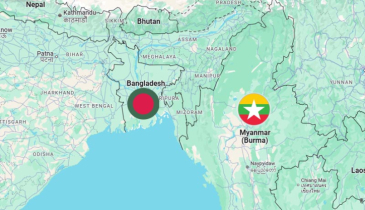Bangladesh aims to join China-led RCEP

Last week, the commerce ministry sent a letter of consent to the foreign ministry, requesting Bangladesh's entry into the China-led Regional Comprehensive Economic Partnership (RCEP). It is the first formal step Bangladesh has taken to join the RCEP, as the move is expected to unlock numerous trade and investment benefits for the country. RCEP is the first agreement of its kind involving some of the most substantial Asian economies. Members under the agreement will progressively lower tariff and nontariff barriers to allow freer movement of goods and boost investment within their territories.
Bangladesh has taken the initiative to join the RCEP mainly because it will lose preferential trade benefits to markets that make up the Association of Southeast Asian Nations (ASEAN) group once it graduates from the LDCs in 2026. After attaining developing country status, Bangladesh would lose several trade benefits from its global partners. Experts have been calling for regional and bilateral free trade agreements to absorb post-graduation challenges. Following this, the Asia-Pacific region, where most countries and regions are participating in the RCEP, is poised to become the most dynamic region of the global economy, making it logical for Bangladesh to connect with these economies.
The Regional Comprehensive Economic Partnership, or RCEP, is a regional trading block comprising 15 countries and around 2.3 billion people, a $25.8 trillion GDP, 30% global GDP, and a $12.7 trillion trading hub. More than 31% of global FDI inflows are currently accounted for in RCEP. The Chinese effort brought ten ASEAN members-Japan, South Korea, Australia, and New Zealand-together to sign a free trade agreement that allows the member states to overcome tariff barriers and ensure duty-free access in the Asia-Pacific region. Bangladesh's decision to join this emerging trade-bloc-styled partnership seems practical where the core motive would be to partner in boosting exports with other members.
It is worth mentioning that membership in the RCEP will give Bangladesh expanded market access, particularly to major economies such as China, Japan, South Korea, and members of ASEAN. Among the 15 countries of RCEP, Bangladesh gets duty-free export facilities to Australia, Japan, New Zealand, China, South Korea, and Thailand. After transitioning from LDC in 2026, Bangladesh will lose this advantage in these countries. Joining RCEP will continue to provide export benefits to these markets. On the other hand, there will also be benefits of increasing manpower exports and increasing remittances.
This membership is expected to boost Bangladesh's exports in key sectors, including textiles, garments, pharmaceuticals, and other goods. Primarily, it is assessed that Bangladesh's exports would increase by $3.26 billion and FDI by 3.36 percent. In addition, joining the RCEP will significantly improve Bangladesh's connectivity to regional value chains. The agreement has already demonstrated its effectiveness in integrating supply chains within the region, which will enable Bangladesh to better align with regional production networks and enhance the value of its products. It not only underscores Dhaka's ambition to secure trade advantages but also has implications for the larger Asian trade landscape.
Joining RCEP will enhance Bangladesh's commercial and strategic standing in both regional and global contexts. RCEP includes some of Bangladesh's key export destinations, like China and Japan. Being part of this bloc would allow Bangladesh to increase its export competitiveness, especially in sectors like apparel, and access large markets under favorable conditions. With apparel making up 68% of its total exports to RCEP members, joining will ease access to Bangladesh's largest export category. Also, RCEP membership will enhance trade opportunities already available through GSP facilities and PTAs. A feasibility study of joining RCEP suggests the potential benefits include an estimated $5 billion increase in exports and tariff reductions for 90% of trade over the first 10 years.
The RCEP framework also facilitates investment flows within the region, potentially attracting increased foreign investment to Bangladesh, particularly in the manufacturing and infrastructure sectors. By expanding trade and investment opportunities, Bangladesh's economic growth potential will be amplified, leading to job creation and improved living standards for its people. While relying on a single market can pose risks, expanding trade with the member countries of the RCEP means that Bangladesh can achieve market diversification, thereby enhancing the resilience of its economy.
By joining RCEP, Bangladesh can mitigate the risks of dependency on any single nation, secure preferential market access post-LDC graduation, and attract diverse foreign investment. RCEP opens doors to a wider range of markets, reduces over-reliance on India, and provides a pathway to continued economic growth post-LDC graduation. However, it may seem easier to assume that joining RCEP would lead Bangladesh towards China. But the main theme of joining RCEP is just the free trade agreement and trade benefits. There is no other hidden stance from the diplomatic perspective.
So far, Bangladesh is taking a positive stand regarding getting into RCEP, considering all the issues. Joining RCEP is strategically better for Bangladesh as it offers broader market access, diversification of trade partners, and the ability to tap into a large and rapidly growing Asia-Pacific economic bloc. Undoubtedly, Bangladesh needs to diversify its trade landscape and create broader investment opportunities to boost its economy. With discussions ongoing with at least 11 countries, Bangladesh aims to navigate the changing international trade landscape andaccelerate the country's resilient track record of growth dynamics. And the RCEP presents a valuable opportunity to meet these needs. -Source: Daily observer
.png)









